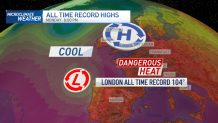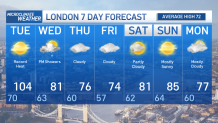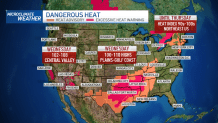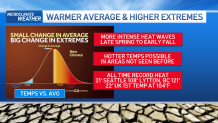In case you missed it, London reached a dangerous 104° Tuesday, making it the hottest day ever for parts of the United Kingdom.
This heat was produced by an unusually strong region of high pressure moving over the U.K. Keep in mind the average high is 72 degrees, as most people don’t even have air conditioning in the region.
Cooling is on the way by Wednesday as temps will dip back into the 70s and 80s this week. This isn't the only area seeing extreme heat as the United States is also dealing with heat waves.


Major heat is hitting the Plains and Gulf Coast as temps will reach up to 110 degrees, Northeast heat and humidity in the 90s to 100s and Central California 100s.

While we historically do have some extreme heat and cold events, the trend of warmer temps and more extreme heat has been on the increase over the past 10 to 20 years. You can see this in the data below. This means more intense heat waves starting in late spring and lasting into early fall.
The result has been temperatures hotter than ever before like the London’s record temperature of 104 degrees, Seattle 108 degrees in 2021 and Lytton, BC 121 degrees in 2021.

Get a weekly recap of the latest San Francisco Bay Area housing news. Sign up for NBC Bay Area’s Housing Deconstructed newsletter.
The good news, new research shows we can all make a difference help these consequences from getting worse with substantial cuts in emissions and greenhouse gases.
This is something we can all participate in by lowering our carbon footprint.
You can learn ways to lower your carbon footprint and details on all of our climate stories in this link.




